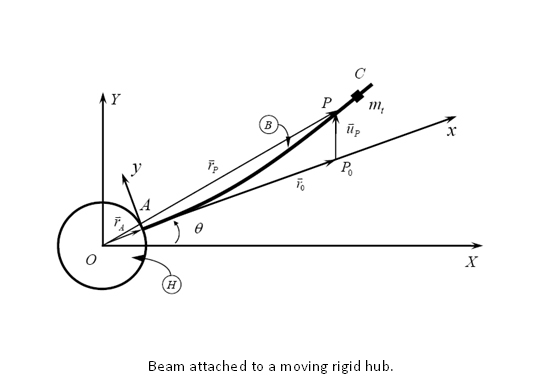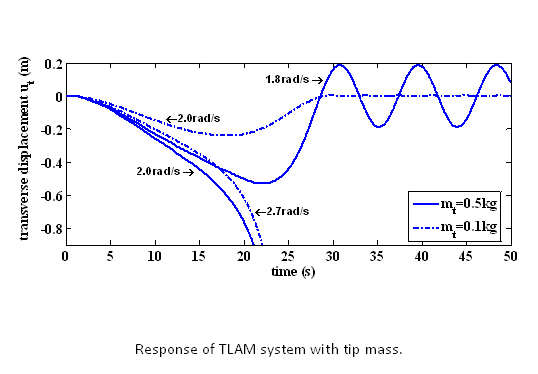Dynamic Stiffening of Rotating Beams with a Tip Mass
This research aims at developing a dynamic model of a rotating beam with a tip mass undergoing large angle, high speeds maneuvering. This type of model may also be useful in modeling, analysis and development of various inertial sensors and transducers with similar operating principles. With the consideration of the second-order term of the coupling deformation field, the complete first-order approximated model (CFOAM) of a flexible spacecraft system is being developed by using assumed mode method (AMM) and Lagrangian principle. A first-order approximated model (FOAM) is obtained by neglecting the high order terms of the generalized coordinates in CFOAM. A lower order simplified first-order approximated model (SFOAM) is derived by deleting the terms related to the axial deformation. Numerical simulations and theoretical analysis show that: (i) the second-order term has a significant effect on the dynamic characteristics of the system and the dynamic stiffening is accounted for, while the traditional linear approximated model (TLAM) presents invalid simulation results; (ii) the end mass has a 'stiffening' effect on the flexible system in FOAM, but a 'softening' effect in TLAM; and (iii) the SFOAM describes the dynamic behavior well and can be used for controller design.


